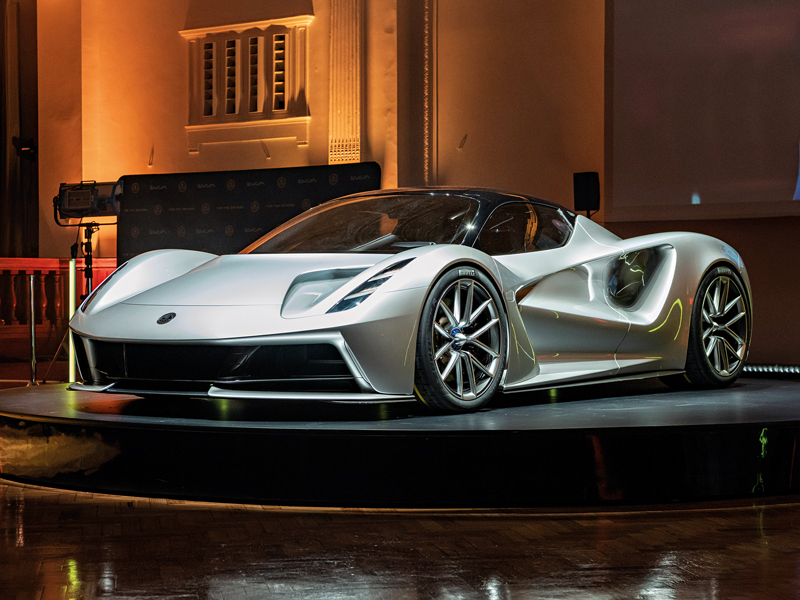Introduction The automotive world is witnessing a revolution with electric supercars redefining speed and performance. As major brands like Tesla, Rimac, and Lotus push the boundaries, EV technology is no longer just about efficiency—it’s about adrenaline-pumping acceleration and cutting-edge innovation. But are electric supercars ready to dominate the roads and replace their fuel-powered predecessors?
The Rise of Electric Supercars
Gone are the days when electric cars were labeled slow and boring. With cars like the Rimac Nevera achieving a mind-blowing 0-60 mph in under two seconds, the electric supercars revolution is shaking up the automotive industry.
- Tesla Roadster 2.0: Dubbed the fastest production car, with a top speed of over 250 mph and a range of 600 miles.
- Rimac Nevera: A hypercar boasting 1,914 horsepower, proving that electric supercars speed isn’t a myth.
- Lotus Evija: With cutting-edge aerodynamics and a futuristic design, it’s a glimpse into the electric supercar of tomorrow.
Why Electric Supercars Are Gaining Traction
- Instant Torque & Blazing Speed: Unlike combustion engines, electric motors deliver power instantly, providing rapid acceleration.
- Zero Emissions, Maximum Performance: Governments worldwide are pushing for green initiatives, making electric supercars the future of performance cars.
- Advanced AI and Connectivity: From self-driving capabilities to smart performance tuning, electric supercars are packed with next-gen technology.
Challenges That Remain for Electric Supercars
Despite the hype, electric supercars still face hurdles:
- Battery Weight & Range: High-performance EVs need powerful batteries, which add weight and affect agility.
- Charging Infrastructure: Unlike gas stations, charging networks are still expanding, making long drives a concern.
- Expensive Price Tags: Electric supercars are currently a luxury, limiting accessibility for mainstream buyers.
The Evolution of Electric Supercars
The evolution of electric supercars is not only about speed but also about revolutionizing the automotive industry. Every major automaker is stepping into the EV space, pushing boundaries with innovation and sustainability. The increasing adoption of electric supercars is a testament to the demand for eco-friendly alternatives without compromising performance.
Performance Metrics of Electric Supercars
Electric supercars are measured on various performance metrics that highlight their efficiency and superiority over traditional gasoline-powered vehicles. These metrics include:
- Acceleration: Electric supercars can achieve 0-60 mph in under 2 seconds.
- Horsepower: Electric supercars deliver over 1,500 HP effortlessly.
- Top Speed: Some electric supercars exceed 250 mph.
- Battery Range: EV batteries now offer over 500 miles of range.
Technological Innovations Driving Electric Supercars
Electric supercars incorporate cutting-edge technology that sets them apart:
- Regenerative Braking: Enhances efficiency and extends battery life.
- AI Integration: Allows for self-driving and advanced safety features.
- Lightweight Materials: Carbon fiber and aluminum reduce weight, enhancing speed.
The Future Outlook: What’s Next for Electric Supercars?
With innovations in solid-state batteries and ultra-fast charging, the next decade will see even lighter, faster, and more efficient electric supercars. Industry giants like Ferrari and Lamborghini are also stepping into the EV space, proving that the future of speed is electric supercars.
Will Electric Supercars Replace Gasoline Supercars?
While traditional gasoline supercars have been the epitome of speed and luxury for decades, the shift towards electric supercars is inevitable. The transition is already evident as more manufacturers pivot towards sustainability while ensuring that performance remains a priority.
The Role of Sustainable Energy in Electric Supercars
Electric supercars contribute significantly to environmental conservation by utilizing sustainable energy. Renewable energy sources such as solar and wind power can be used to charge electric supercars, making them an ideal choice for the future.
Industry Leaders Dominating the Electric Supercar Market
Several brands are leading the electric supercars revolution:
- Tesla: Pioneering performance EVs with cutting-edge technology.
- Rimac Automobili: Engineering some of the fastest electric supercars.
- Porsche: Merging luxury and electrification seamlessly.
- Lotus: Innovating aerodynamics and efficiency.
Electric Supercars vs Traditional Supercars: Which is Better?
- Speed: Electric supercars have quicker acceleration.
- Efficiency: Electric supercars produce zero emissions.
- Maintenance: Fewer moving parts reduce maintenance costs.
- Sound: While gasoline supercars roar, electric supercars offer a futuristic hum.
How Electric Supercars Will Shape Motorsport
Motorsports are evolving with the rise of electric supercars. Events like Formula E showcase the potential of electric supercars on racetracks, proving they can outperform traditional combustion engines.
Conclusion
Electric supercars are not just a trend—they are the future. With insane acceleration, eco-friendly advantages, and smart tech, they are set to dominate the roads. As the industry moves forward, expect even more groundbreaking advancements in electric supercars. Are you ready for the high-voltage adrenaline rush? Stay tuned to MotorBozz for the latest updates in the world of automotive innovation

